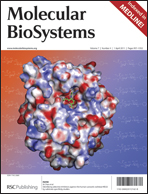Thrombin, one of the major proteases in the coagulation cascade, activates protease activated receptors 1 and 4 (PAR 1 and PAR4) to generate a network of intracellular signals that lead to stable platelet aggregation. Abnormal platelet activation could lead to either thrombosis or bleeding disorders, thus a predictive model of platelet activation would be an invaluable tool for the study of platelet function. In this work, we developed a computational model of PAR1-stimulated human platelet activation fully based on experimental observations. The model is represented by a system of ordinary differential equations (ODEs) describing the kinetics of the interacting components. The model is able to reproduce experimental dose responses and time-courses of cytosolic calcium (Ca2+), phosphatidylinositol 4,5-bisphosphate (PIP2), diacylglycerol (DAG), GTP-bound Ras-proximate-1 (Rap1GTP), secretion of dense-granules, and activation of integrin α2bβ3 (GPIIbIIIa). Because of the inherent complexity of such a model, we also provide a simple way to identify and divide the system into interlinked functional modules to reduce the number of unknown parameters. Both the full and the reduced kinetic models are shown to predict platelet behavior in response toPAR1 activation.

You have access to this article
 Please wait while we load your content...
Something went wrong. Try again?
Please wait while we load your content...
Something went wrong. Try again?


 Please wait while we load your content...
Please wait while we load your content...